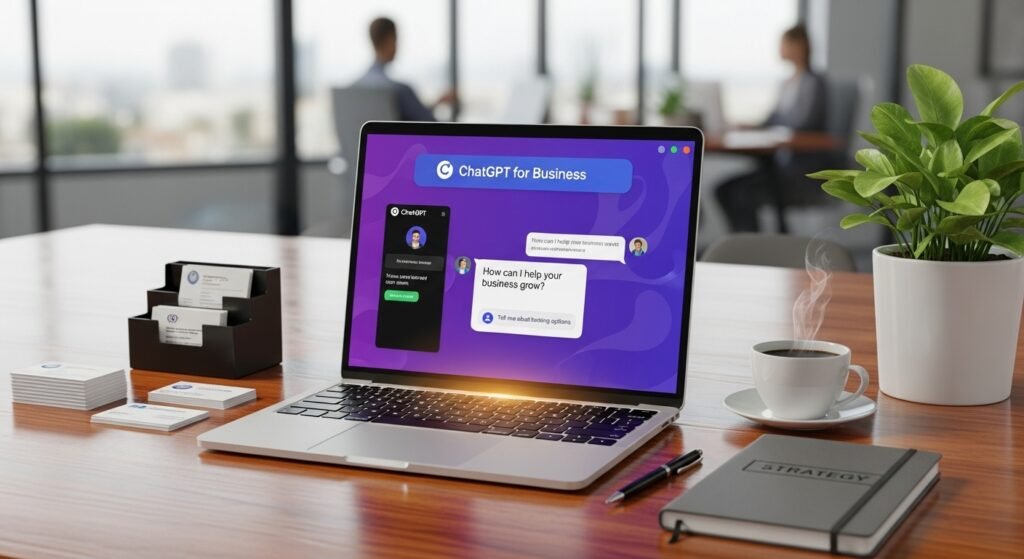ChatGPT, developed by OpenAI, has become a powerful tool for businesses looking to enhance their customer support operations. Launched in November 2022, this AI-powered chatbot uses advanced natural language processing (NLP) to generate human-like responses, making it a valuable asset for handling customer inquiries efficiently. While it’s not a replacement for human agents, ChatGPT can significantly improve productivity and customer satisfaction when used correctly.
Understanding ChatGPT’s Role in Customer Support
ChatGPT is not designed to fully replace human customer service agents but to serve as a powerful assistant. It excels at automating routine tasks, providing quick insights, and supporting agents with tasks like drafting responses or summarizing conversations. However, due to potential inaccuracies and security concerns, it’s best used internally rather than for direct customer interactions.
Key Benefits:
- Boosts Agent Productivity: Automates repetitive tasks like summarizing emails or drafting responses, saving time.
- Handles Routine Queries: Answers frequently asked questions (FAQs) quickly, reducing agent workload.
- Supports Multilingual Communication: Translates inquiries into over 80 languages, enabling global support.
Limitations:
- Inaccuracies: ChatGPT can “hallucinate” or provide incorrect information, requiring human verification.
- Not for Direct Customer Use: Without oversight, it may deliver responses that harm brand reputation.
- Data Privacy Concerns: Handling customer data requires compliance with regulations like GDPR and HIPAA.
What Is the Latest Version of ChatGPT?
Integrating ChatGPT with Customer Service Platforms
Integrating ChatGPT with customer service platforms like Zendesk, Salesforce, or Microsoft Copilot can streamline workflows and enhance automation. OpenAI’s API allows businesses to customize ChatGPT for their specific needs, ensuring more relevant responses.
Steps to Integrate:
- Obtain an OpenAI API Key: Sign up at OpenAI’s platform to access the API.
- Select a Platform: Choose a customer service tool that supports ChatGPT integration, such as Zendesk or Salesforce.
- Train the Model: Feed ChatGPT your company’s knowledge base, FAQs, and support documents.
- Embed in Workflow: Use the API to integrate ChatGPT as an internal tool for agents or a customer-facing chatbot with human oversight.
Example:
Zendesk collaborates with OpenAI to enhance features like ticket summarization, response expansion, and knowledge base management. This integration allows agents to resolve issues faster and improve customer experience.
Training ChatGPT for Your Business

To ensure ChatGPT provides accurate and relevant responses, it must be trained on your company’s data. This involves feeding it with your knowledge base, FAQs, and other support materials.
How to Train:
- Gather Data: Collect FAQs, help center articles, and past customer interactions.
- Use OpenAI’s API: Train models like GPT-4o or GPT-4o mini using your data via the API.
- Test and Refine: Regularly test responses and update training data to reflect changes in products or policies.
Best Practice:
Continuously monitor and update the training data to keep ChatGPT aligned with your business’s evolving needs.
Use Cases of ChatGPT in Customer Support
ChatGPT offers a range of applications to enhance customer support operations. Below are some key use cases:
| Use Case | Description |
|---|---|
| 24/7 Support | Provides round-the-clock assistance, ensuring no query goes unanswered. |
| Multilingual Support | Handles queries in over 80 languages, breaking down language barriers. |
| Answering FAQs | Quickly responds to common questions, reducing agent workload. |
| Assisting with Onboarding | Guides new customers through setup processes with clear instructions. |
| Sentiment Analysis | Analyzes customer emotions to tailor responses (e.g., empathetic or formal). |
| Cross-Selling/Upselling | Suggests relevant products or services during interactions to boost revenue. |
Example:
A customer emails a lengthy complaint. ChatGPT can summarize the email in seconds, highlighting key issues and suggesting a response, which the agent can then personalize.
Best Practices for Using ChatGPT in Customer Support
To maximize ChatGPT’s effectiveness while minimizing risks, follow these best practices:
- Verify Responses: Always check ChatGPT’s output for accuracy, as it may provide incorrect or biased information.
- Use as a Draft: Treat ChatGPT’s responses as starting points that need editing to match your brand’s voice.
- Monitor Interactions: Regularly review chatbot outputs to ensure alignment with company policies.
- Ensure Data Security: Protect customer data by complying with regulations like GDPR and HIPAA.
- Train Agents: Educate your team on ChatGPT’s capabilities and limitations to use it effectively.
Example:
Use ChatGPT to roleplay as a disgruntled customer during agent training, helping agents practice handling difficult situations.
Addressing Common Concerns
While ChatGPT offers significant benefits, there are challenges to address:
- Accuracy: ChatGPT may provide incorrect information, known as “hallucinations.” Always verify responses.
- Complex Queries: It may struggle with niche or highly specific questions, requiring human intervention.
- Data Privacy: Ensure customer data is handled securely, especially when integrating with third-party platforms.
- Bias: Monitor for potential biases in responses and refine training data to mitigate them.
Note:
For GPT-3.5, ChatGPT’s knowledge is limited to September 2021. GPT-4 can access real-time data via plugins, but websites can block OpenAI’s web crawler (GPTbot).
Conclusion
ChatGPT is a powerful tool for enhancing customer support when used as an internal assistant and integrated with platforms like Zendesk or Salesforce. By training it on your company’s data and following best practices, you can improve efficiency, reduce response times, and enhance customer satisfaction. However, human oversight is essential to address inaccuracies, ensure data security, and maintain a personal touch.
As AI technology evolves, ChatGPT’s capabilities will likely expand, offering even more opportunities to streamline customer support. Start small, test thoroughly, and scale your implementation to achieve the best results.
